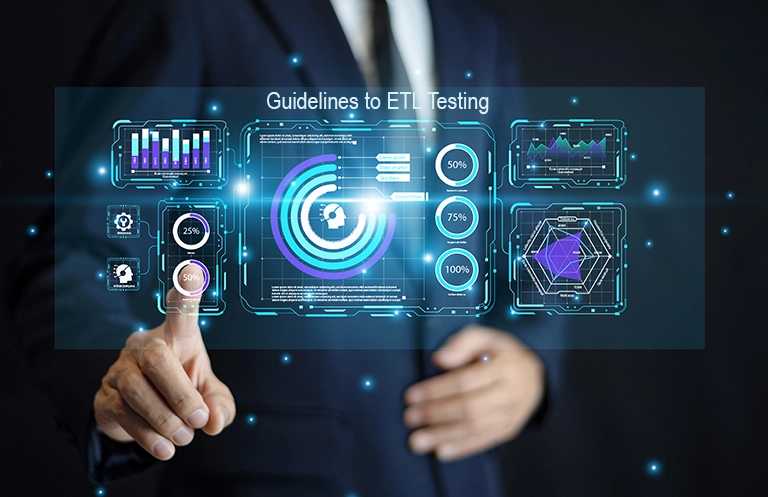Overview of Defense-in-Depth
Defense-in-depth is a layered methodology for the security of an application, endpoints, system, or organization. The main goal of this tactic is that if one line of defense is compromised, other layers are present as a backup to make sure that threats are stopped or only bound to that specific level. In other words, an invader finding a way in our application will not be able to compromise an entire system or it will need higher efforts to break through the system.
The defense-in-depth strategy concentrates not only on the security weaknesses of hardware and software, but it also focuses on negligence or human error that are often the cause of security breaches. It is a thorough approach to deploying a blend of advanced security tools to protect data, endpoints, networks, and applications. Generally, organizations set an aim to cease cyber threats before they occur, but a robust defense-in-depth strategy also thwarts an attack that is already underway and prevents further harm from happening.
Common Cybersecurity Issues: Where Defense-in-Depth is Useful
In today’s world, everything must be secured one or another way. Enterprises are required to set up proper security strategies to defend themselves. The defense-in-depth strategy helps to tackle common cybersecurity issues and provides multi-layer security to enterprises or software or systems.
The following are some common issues with organizations’ strategies that can be tackled with defense-in-depth strategy when implementing a cybersecurity strategy:
- An anti-malware software program has not been updated or not installed on all gadgets.
- Employees have not been trained and are falling victim to phishing methods.
- Employees don’t know security policies that are not even enforced.
- No encryption or weak encryption is implemented.
- Patches for software are not being updated or are ignored.
- Vendors, business partners, or third parties, such as cloud service suppliers, are not fully safe.
- Unsecured server rooms, which fall in physical security defects.
- Unsecured networks, such as the public internet are used by remote employees.
Assume all these concerns taking place at once. The only way for an organization to protect itself from vulnerabilities is with a strong, thorough defense-in-depth scheme. If a single measure fails, another measure is on backup ready to act.
Security Features/Elements Used in Defense-in-Depth Practice
There are numerous security elements available to implement in a defense-in-depth strategy. Organizations implement these security elements according to their requirements and availability of resources in their defense-in-depth strategy.
The following record covers a brief introduction to some security elements, that are commonly incorporated in defense-in-depth:
- Physical security controls: Protect IT infrastructure, data centers, corporate houses, and other physical resources against risks like unauthorized access, theft, or tampering. These can contain various types of access control and supervision methods, such as security surveillance cameras, RFID scanners, and biometric protection (for example, facial recognition systems and fingerprint scanners).
- Network security controls: They act as the very first line of security when protecting a network. There are many tools and software available like VPNs, firewalls, and VLANs to defend organization networks and standard on-premises IT assets. These software and tools validate users to access the network and utilize a device or product. Firewalls analyze the network traffic to prevent connecting to unauthorized networks and permit or restrict network traffic based on a defined set of rules in the firewall configuration.
- Intrusion detection/prevention (IDS/IPS) tools: These often work with a firewall application or device to recognize possible security risks and take responsive action quickly. These tools can be implemented on the network or on the host based on the requirements.
- Administrative controls: Check the authorization of the user, once authenticated, to access only certain applications or parts of the network as per the role of the user in the organization. It uses SSO and Multi-Factor Authentication (MFA) like access management solutions to validate and approve users. These controls refer to the policies fixed by the system admins and security teams.
- Endpoint security solutions: Antivirus and endpoint detection & response tools can be used to protect endpoint systems like PCs, servers, and mobile devices. Antivirus software stops nasty programs from entering the network and propagating. Most antivirus software relies on signature-based detection. Endpoint Detection and Response (EDR) tools use a monitoring approach to detect threats originating from the endpoint and host devices. Some of these EDR solutions use a behavior analysis approach to detect potential outliers. Machine learning and algorithms can identify irregularities in the actions of users/employees and in the applications and endpoint devices themselves.
Security Practices Used in Defense-in-Depth
Whether applications are hosted in the cloud or on-premises, history shows sophisticated invaders can breach networks and persist their access for weeks or longer. To lower the risk, corporations are applying a Zero Trust attitude and modifying their security strategies, using a mixture of preventative controls like security practices and detection mechanisms to detect invaders and stop them from reaching their goals once they break into a network.
Along with the security elements, organizations need to implement strong security practices to control the risk to their application or infrastructure. Following is the list of some security practices, that could possibly take place in the organizational defense-in-depth strategy:
- Least-privileged access
- Multi-Factor Authentication (MFA)
- Secure developer tools
- Restrict access to critical endpoints
- Network segmentation
- Preventing lateral movement
- Continuous monitoring and validation
- Encryption
- Data loss prevention
- VPNs
- Firewall
- Patch management
- Backup and recovery
How eInfochips Can Help in Deploying Defense-in-Depth Strategy?
To ensure the secure development of clients’ IoT products, eInfochips provides end-to-end solutions. In the product development lifecycle, we add multiple layers of security practices as per the requirements. To secure products from the roots, we follow the secure-by-design approach, which covers the security of the product from the design phase of product development.
Our security workflow covers everything from secure-by-design to VAPT, which can be integrated with the product development life cycle. This approach ultimately helps customers to deploy security products in an open world with a defense-in-depth strategy, which will help secure products with multi-layered security.
eInfochips has facilitated businesses to develop, deploy, and manage secure products at a global scale by securing their interconnected device networks across device-connectivity-application layers using tactical, transformational, and controlled operations methods. We have Cybersecurity expertise for threat modeling and VAPT across web/mobile applications, data, OS/firmware, devices, and cloud that support security industry standards (like OWASP, GDPR, HIPPA, IEC/ISA-62443), regulations, and guidelines like OWASP, NIST, MITRE, ENISA, and IoT Security Foundation.
For more information on how we can help secure your network and systems, contact us today.














